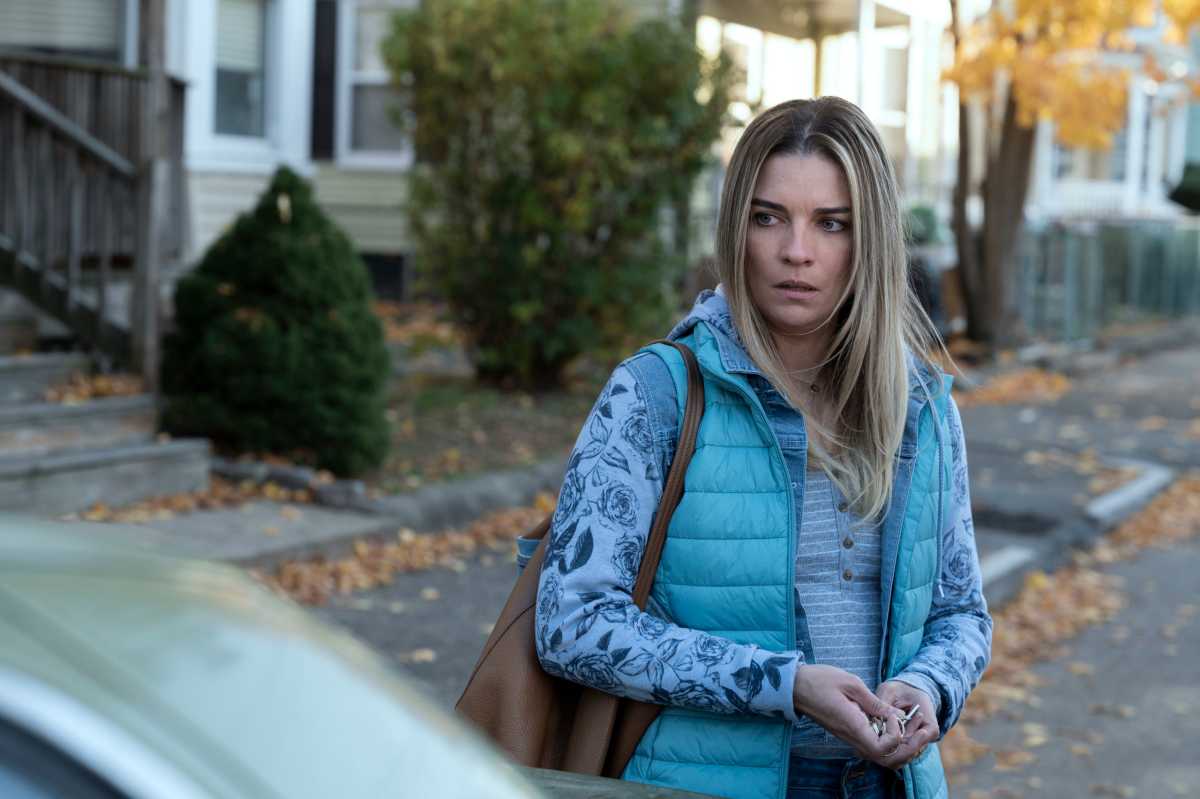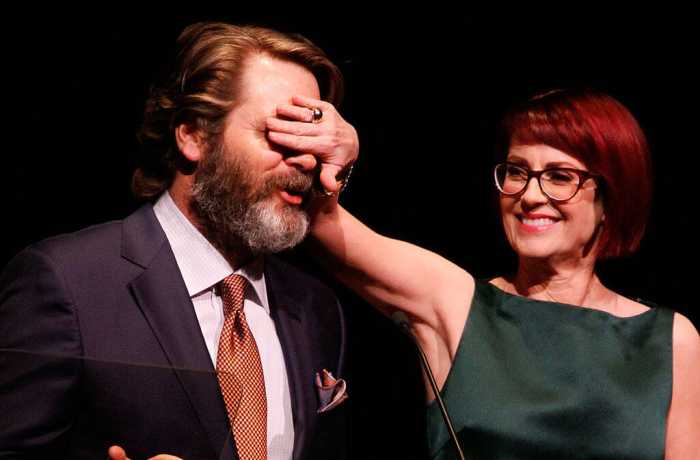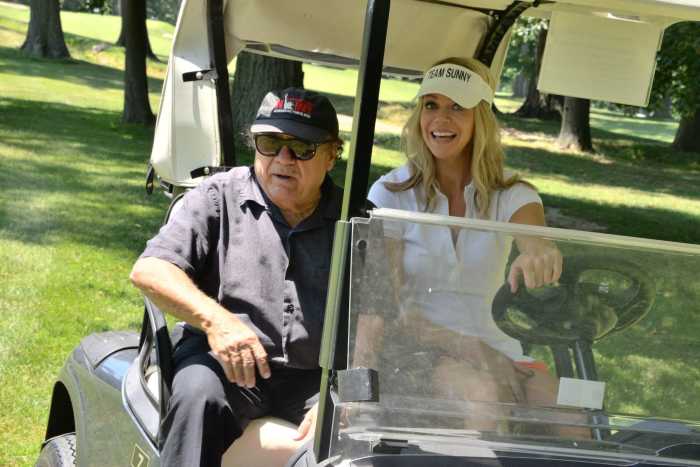A sitcom is all fun and games, or so it’s made to seem. We’ve all seen the set-up of a family dynamic with a quirky dad and a funny, but still subtle wife who normally is the counterpart of their compromised relationship. But in a sitcom you don’t ever really leave that bubble of laugh tracks and hilarious mishaps to see a real problem with it.
In AMC’s new dark comedy, ‘Kevin Can F**k Himself,’ you do.
Annie Murphy takes on this new role after ‘Schitt’s Creek’ as Allison, the “sitcom” wife, who audiences find out is not what they’re used too—in a multi-cam setting at least. After the opening scenes generate that familiar sound of applause, viewers are then just a few minutes later thrust into Allison’s lens, which is through a single camera and highlights more of the bleakness of the situation. While Allison is stomping on cockroaches and trying to buy a new house, Kevin [Eric Peterson] is playing beer pong and spending all of their savings on things like a Bill Belichick jersey. This is where Allison hatches a plan to kill him.
Series creator Valerie Armstrong and Showrunner/Executive Producer Craig DiGregorio sat down to discuss more on why they constructed a world with two lenses on ‘Kevin Can F**k Himself.’
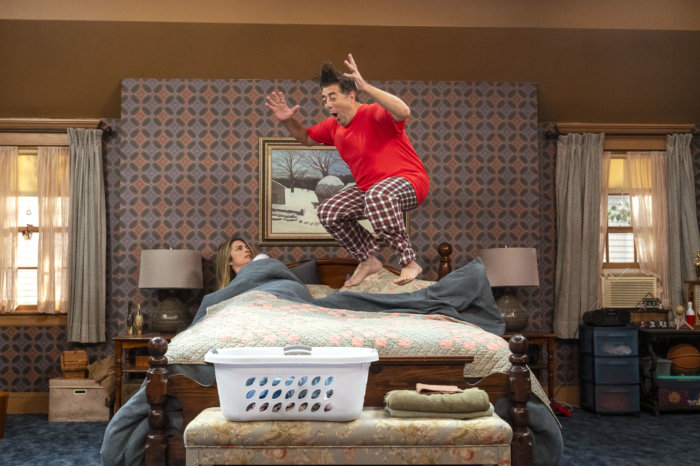
Where did the idea for this show come from?
Valerie: I was listening to a podcast called The JV Club, where Janet Varney interviews other women and they talk about high school—I loved it. She had another woman comedian on and they were talking about pilot season and how every year they are put up for the sitcom wife. Still to this day and every year, there is a sitcom wife that they audition for, and every year they’re told this one needs to be funny… But all of their lines are just set up machines for all of the men in the room, and I got really angry. I was wondering how this was still happening and how these roles were going around and why these women got these lines? I would have killed to write for them, I was an assistant at the time.
I thought, I want to follow her… I bet she’s miserable. Then the image of the show occurred to me. I thought of a woman in her sitcom living room with canned laughter and her funny husband and that when she turns and walks out the swinging door into the kitchen, we for once follow her. We’re in single camera and we roll right up to her face, and she is miserable. It’s not that she’s an actor or a different person from one room to the next, it’s just that nobody was paying attention and nobody was asking how she was… you don’t know until you’re right up in her face and see it. It was the most excited I’ve been about an idea I had I think ever. From there, I started thinking about the format switch and what it really meant, I realized it was a metaphor and it took it beyond being a gimmick to me.
What were your thoughts regarding the show when you heard what it was about, Craig?
Craig: [When I heard] the elevator pitch, I knew I had to see how this was going to be executed and when I read the initial pilot, and I thought, ‘Oh yeah, there is something here for sure.’ From there, they were taking meetings for show-runners and I met Valerie and we got along very well and clearly, we have similar tastes, and we’re very good about talking to each other. We care about the show a lot. I truly think of her as family, since we’ve been working together for two and a half years. [The show] is weird, it’s heartfelt, it’s emotional—it’s everything you want it to be and it was just an exciting thing to talk about especially with someone that cares about it so deeply.
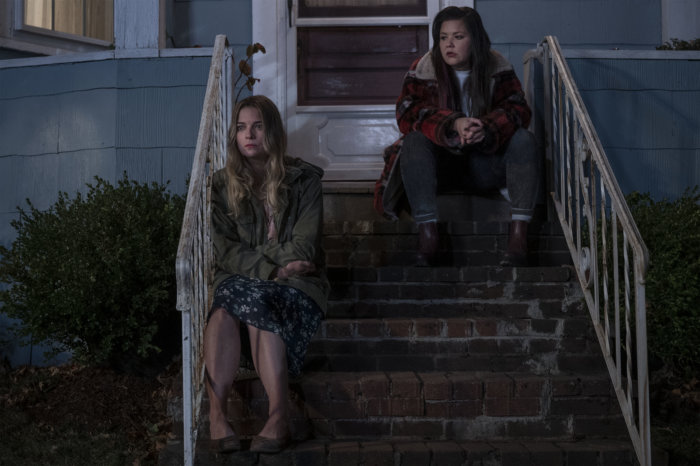
What are some of the benefits of the format switch in regards to telling the story? On the other hand, what were some of the challenges?
V: As Craig says, we did two shows, which was definitely more challenging than one. But to me, with the format switch and the metaphor behind it—it means a lot. A lot of it has to do with the benefit of the doubt. That guy, Kevin, gets to walk around in his own little sitcom and he has the world cheering him on. He gets to be a boy until he’s 65 and he never has to really deal with the consequences of his actions fully, and there are guys who get to walk around like that in real life. They don’t have a sitcom audience following them, but they might as well.
That’s not everybody and that’s not every man in our show, but it is a specific type of man. That was important to me, but also the single-camera stuff is everything that I feel that I need to hide as a woman. All of the issues that I have with myself that are perceived flaws, they are really what makes us human. But to me, there are things that I feel like I can’t share with the world and that is Allison in that kitchen. It’s that rage that she feels and it can only come out there, because God forbid she show it in the multi-cam. It’s kind of a metaphor for marriage: they say men get married thinking their partners will stay the same and women get married thinking their partners will change.
Nothing changes in that multi-cam. It’s regenerative, it’s conservative and that is the way Kevin likes it. So, we’re always sort of talking about what it means and how it can change.
With Allison herself, I really loved her relationship with her neighbor. What are some aspects of her character that you enjoyed watching unfold on screen?
V: I get so much satisfaction watching her bond with Patty [her neighbor.] To watch two women who are very alone and dissatisfied find each other as two ports in the storm— I think it’s wonderful. I also think that Annie does such a fantastic job of making Allison seem innocent and sheltered and at the same time trying to kill her husband. Watching her trying to find herself, is really very strange but it’s a very active goal and something that was always fun to write, too. And with Annie, you see her and you root for her.
What are some of the biggest differences regarding the two formats and audience’s experience with them both?
C: In the multi-cam, there’s such a cadence and rhythm with things in a way that things are said and filmed—I think we just wanted to be able to show people that it’s the same universe but just a different world [or lens.] In the way that we film it, under the 360 degree lights of a mulit-cam, you’re not going to see some of the dirt and the grime in the world. Then the way some that the single cam is filmed, hopefully you sort of notice that this is a real world all around.
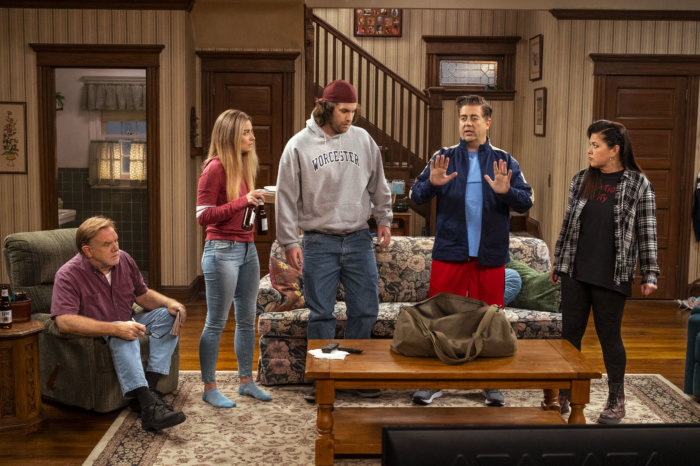
V: It’s the same living room. It’s made to look pretty nice, when in reality it’s a prison for Allison. Specifically, having Allison and Patty in both worlds, they don’t become different people when they’re in the multi-cam, but it’s interesting to see them play in it. With the single cam, they’re not playing that game anymore and they get room to breathe and are able to make pauses and say ‘uhm’ and ‘like’ and stutter and not have everything together. It’s not that their performance has changed, it’s just at a different calibration.
‘Kevin Can F Himself’ premieres Sunday, June 13 on AMC+ and Sunday, June 20 at 9 p.m. on AMC.



